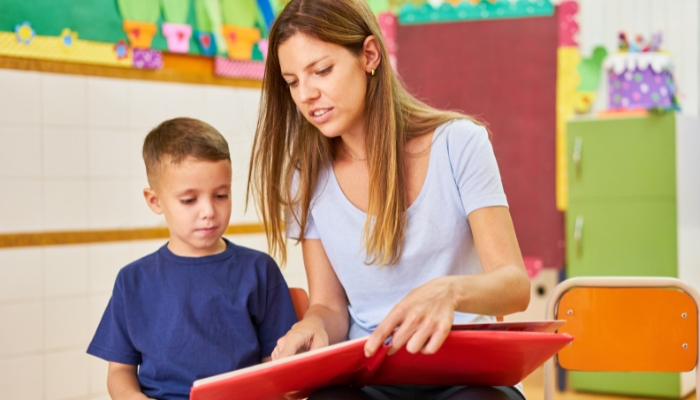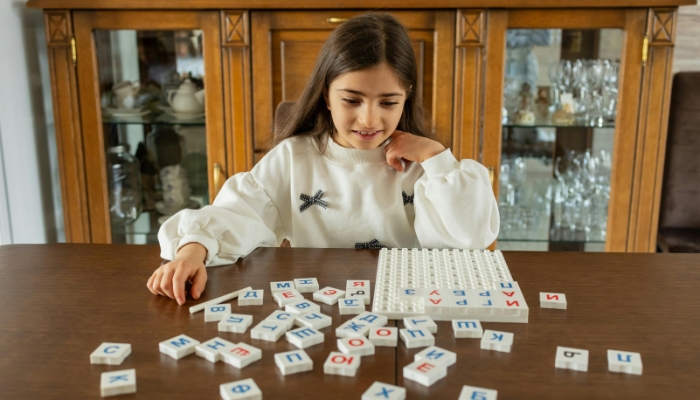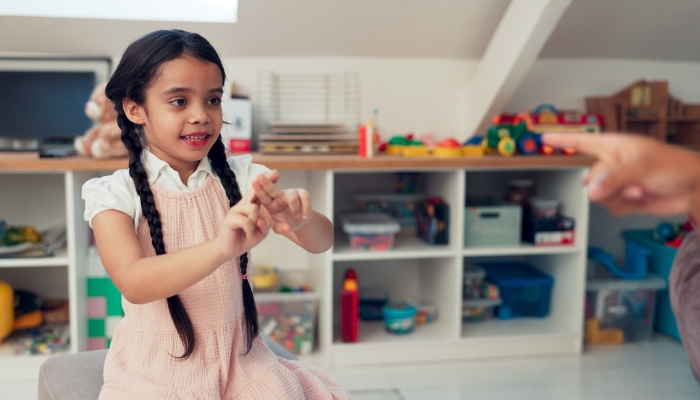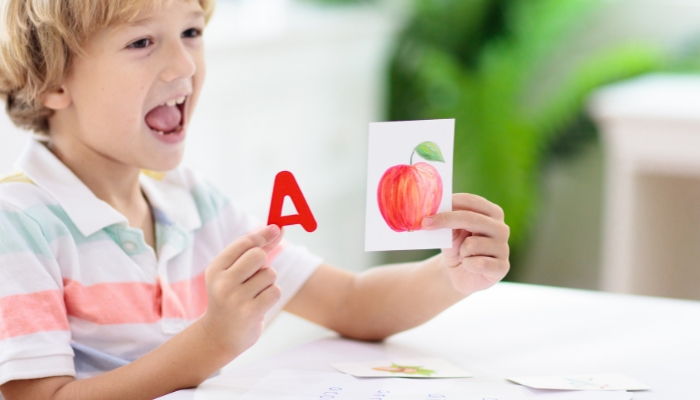You watch your child flip through picture books with pure excitement. Their tiny fingers trace letters they recognize. You wonder if they're truly ready for kindergarten reading expectations.
Many parents share this concern about their child's reading preparation. A reading checklist for kindergarten helps you identify exactly what skills your child needs. This guide walks you through each essential reading milestone your child should reach.
You'll discover specific skills to look for, practical ways to support development, and clear action steps with a bonus checklist template. Follow along to give your child the best possible start on their reading journey.
Key Takeaways
-
Early reading readiness combines multiple skills, including phonics, sight words, and comprehension, to support long-term literacy.
-
Observing and assessing your child’s abilities helps tailor practice to their unique learning pace.
-
Simple, consistent activities at home strengthen both skill development and confidence in reading.
-
A structured approach to early literacy facilitates a smoother and more successful transition to school.
What a Reading Checklist for Kindergarten Means

A reading checklist shows the skills, habits, and attitudes children should develop before or during kindergarten. This foundation creates successful readers who love learning through books and stories.
These checklists break down complex reading development into manageable pieces. You can track your child's progress step by step.
The categories typically include several key areas:
-
Core skills: Letter recognition, phonics, sight words, comprehension.
-
Habits: Daily Storytime, book handling, engagement with print.
-
Attitudes: Curiosity, confidence, enjoyment of reading.
Recent research shows that 64.6% of children entering kindergarten in Ohio have gaps in their reading and overall school readiness skills. That’s why it becomes crucial for you to have a structured checklist that helps identify and address these gaps early, allowing you to provide targeted support that shapes your kid’s future.
This systematic approach gives you confidence about your child's preparation. You'll know exactly where your child excels and where they need extra support.
Benefits of Keeping a Reading Checklist for Your Kindergartners
Using a reading checklist can make all the difference in supporting your child’s early literacy. Instead of feeling overwhelmed by what your kindergartner should know, you get a clear roadmap showing exactly where to focus.
-
Spot Strengths and Challenges Early: With a checklist, you can see what your child already does well and where they might need a little extra help. Catching small gaps early makes it easier to guide them before challenges grow.
-
Track Progress Over Time: When you check off skills as your child masters them, small victories become visible. Watching your child tick off completed skills not only helps you track growth, but it also boosts their confidence and sense of accomplishment.
-
Focus Your Support Efforts: No more guessing which activities will help most. A checklist shows you exactly what to work on, making your reading time together more purposeful and effective.
-
Partner with Teachers: Sharing your child’s progress with their teacher becomes simple. You can demonstrate both strengths and areas for improvement, creating a consistent learning experience between home and school.
-
Build Confidence and Pride: Children love seeing their own progress. Each checked skill is like a little badge of achievement. Celebrating these wins helps your child feel proud of their growing reading abilities.
-
Ease the Transition to School: When your child masters these foundational reading skills, starting school feels less intimidating. Their confidence with reading spills over into other subjects, setting them up for a positive experience from day one.
A reading checklist acts as your child’s guide for literacy. It helps you make smart choices about books, activities, and learning priorities, all while keeping reading fun and stress-free.
With the benefits in mind, let’s take a closer look at the specific skills that form your child’s reading foundation and how you can strengthen them.
Reading Readiness Skills Checklist for Kindergarten

Every kindergartner needs a solid foundation in reading to thrive in their literacy journey. These skills work together like building blocks, each one supporting the next level of reading development.
This comprehensive checklist covers all essential areas your child should master. Use it to assess current abilities and plan targeted practice activities.
Let's explore each critical reading skill your kindergartner needs:
Recognizing and Naming Letters
Letter recognition means your child can identify and name both uppercase and lowercase letters with speed and accuracy. This skill connects visual symbols to sounds and forms the base for future reading. Without strong letter recognition, children often struggle with phonics and word identification throughout their school years.
You can assess this skill by asking your child to point to specific letters, such as finding the letter “B” on a page. Ask them to distinguish between uppercase “M” and lowercase “m.” Test recognition with random letters in books, magazines, or alphabet cards.
Strong letter recognition shows when your child names letters without hesitation in different fonts and sizes.
Ways to Strengthen This Skill:
-
Play alphabet scavenger hunts around your home and neighborhood.
-
Use flashcards during short, fun practice sessions.
-
Point out letters in books, street signs, and packaging.
-
Create letter art projects using different materials.
-
Sing alphabet songs while pointing to the corresponding letters.
Knowing Basic Letter Sounds
Phonics means your child can connect letters to the sounds they make, like “S” saying /s/ or “A” saying /a/. This skill helps them decode words and read independently. Strong phonics knowledge builds confidence and prevents reading struggles later.
You can check this by pointing to letters and asking your child what sound each one makes. They should match letters to their usual sounds quickly, without long pauses or confusion.
Ways to Strengthen This Skill:
-
Sing the alphabet song, emphasizing each letter's sound.
-
Play phonics matching games with picture cards.
-
Practice sound sorting activities using household objects.
-
Read books that emphasize specific letter sounds.
-
Create silly sentences using words with similar sounds.
Understanding Rhymes
Rhyming happens when words end with the same sound, like “cat,” “hat,” or “bat.” Playing with rhymes helps your child notice patterns in language and prepares them for reading and spelling.
Test your child by saying a word and asking them to think of words that sound similar to it. They should recognize sound patterns and enjoy playing with rhyming words in songs and games. Watch for their reaction to rhymes in stories and nursery rhymes.
Ways to Strengthen This Skill:
-
Read nursery rhymes daily with dramatic expression.
-
Play rhyming bingo using picture cards.
-
Make up silly rhyming pairs during car rides.
-
Encourage your child to complete rhyming sentences.
-
Use rhyming books that emphasize sound patterns.
Recognizing Sight Words

Sight words are high-frequency words that appear constantly in children's books and often don't follow regular phonics rules. Words like "the," "and," "is," and "you" should be recognized instantly without needing to be sounded out. Automatic sight word recognition dramatically improves reading fluency and allows children to focus mental energy on comprehension.
Check this skill by writing common sight words on cards and showing them to your child. They should recognize at least 10-15 high-frequency words immediately without hesitation. Look for instant recognition rather than slow sounding out.
Ways to Strengthen This Skill:
-
Label objects around your home with word cards.
-
Read simple repetitive books that feature sight words.
-
Play sight word games, such as word bingo or memory.
-
Write sight words in sand, playdough, or finger paints.
-
Practice sight words during daily routines and activities.
Also Read: What are Sight Words for Beginners
Comprehension and Story Retelling
Reading comprehension involves understanding and remembering story elements, characters, and sequences of events. This skill transforms word recognition into meaningful learning and enjoyment. Strong comprehension abilities support success across all academic subjects and develop critical thinking skills.
Assess this skill by reading a simple story together, then asking your child to retell what happened first, next, and last. They should remember the main characters, important events, and the sequence of the story in logical order. Listen for details that show genuine understanding.
Ways to Strengthen This Skill:
-
Draw a simple chart with “beginning, middle, and end” boxes and let your child fill them with drawings or short sentences.
-
Ask how the story would change if they were the main character to encourage creative retelling.
-
Use Lego or building blocks to recreate important scenes in sequence.
-
Take turns retelling the same story around the dinner table, with each family member adding a detail.
-
Fold paper into 3–4 panels and let your child make a comic version of the story.
Also Read: Reading Comprehension Games and Activities for Students
Phonological Awareness (Syllables and Sounds)

Phonological awareness is the ability to hear, identify, and manipulate individual sounds and syllables in spoken words. This skill develops before children learn to read letters and strongly predicts future reading success.
Test this skill by saying different words and having your child clap the syllables. They should hear that "butterfly" has three parts (but-ter-fly) and identify words that start with the same sound, like "ball" and "book." Watch for their ability to break apart and play with sounds in spoken words.
Ways to Strengthen This Skill:
-
Clap out syllables in names, pets, or everyday objects while saying them slowly.
-
Turn rhythm into learning by tapping or using small instruments to match syllables in words.
-
Sing songs that emphasize beats and sound patterns, encouraging your child to clap or tap along.
-
Practice identifying words that start with the same sound by pointing out items around the house, like “ball,” “banana,” and “book.”
-
Play “I spy” with sounds, asking your child to spot the first or last sound of a word you name.
Also Read: Top 10 Phonological Awareness Games to Boost Kids Reading Skills
Print Awareness and Book Handling
Print awareness encompasses understanding how books and written language work in our culture. This includes proper book handling, left-to-right text tracking, and recognizing that printed words carry meaning. These foundational concepts prepare children for formal reading instruction and help them achieve independent reading success.
Observe your child during story time to check these skills. They should hold books right-side up, turn pages from front to back, and understand that reading starts at the left side, moving right across each line.
Ways to Strengthen This Skill:
-
Practice shared reading with your finger tracking under words.
-
Point out words during everyday activities, like grocery shopping.
-
Discuss signs, labels, and environmental print you encounter.
-
Let your child turn pages and hold books during story time.
-
Show how to start at the front of the books and move through the pages.
Also Read: Shared Reading Activities for Kindergarten
Recognizing Their Own Name
For many children, the first word they learn to read is their own name. Seeing those familiar letters gives them a sense of pride and makes reading feel special. Their face often lights up when they spot their name on a cubby, a birthday chart, or artwork they bring home.
You can test this skill by writing your child’s name alongside a few other names and asking if they can find their own. They should recognize their name in different handwriting styles, on paper, and in various contexts. Look for excitement and pride when they spot their name.
Ways to Strengthen This Skill:
-
Label your child's personal belongings with their name.
-
Practice writing names in sand, playdough, or chalk.
-
Create name puzzles using letter cards or magnetic letters.
-
Point out your child's name on artwork, papers, and certificates.
To make things easier for you, here’s a ready-made reading assessment checklist for kindergarten that you can print and use. It lets you see exactly what stage your kid is at, so you can provide targeted support for the specific skills. Tick what your child can do, and spot areas to focus on.
| Skill Questions | ✓ / ✗ |
| Can your child spot letters in books, on street signs, or on packaging? | |
| When you point to a letter, can your child tell you the sound it makes? | |
| Can your child come up with words that rhyme with “cat,” “dog,” or “hat”? | |
| Does your child recognize common words like “the,” “and,” “is,” or “you” instantly? | |
| After a story, can your child retell what happened at the beginning, middle, and end? | |
| When holding a book, does your child turn pages correctly and read from left to right? | |
| Can your child clap out syllables in words like “banana,” “elephant,” or “butterfly”? | |
| Can your child spot their own name on cubbies, artwork, or school papers? | |
| Can your child identify simple environmental print, like labels on cereal boxes, street signs, or menus? | |
| Can your child follow along in a shared reading session and point to words or pictures as you read? | |
| Does your child show excitement or curiosity when seeing letters, words, or books around them? |
Now that you can see exactly where your child stands, let’s look at simple ways to turn that insight into everyday learning that sticks.
How to Support Your Child's Reading Readiness in Kindergarten?

Helping your child get ready to read means creating small, purposeful moments that make learning fun and natural. You don’t need fancy tools; everyday activities can become powerful reading practice.
Your attitude matters. When you show excitement about reading, your child will pick up that enthusiasm more than from any single method.
Try these simple ways to build your child’s reading readiness:
Create a Reading-Rich Environment
-
Fill your home with age-appropriate books in every room.
-
Display alphabet charts, word cards, and your child's writing attempts.
-
Keep reading materials in the car for waiting periods.
-
Subscribe to children's magazines that arrive monthly.
-
Visit your local library weekly to discover new books together.
Establish Daily Reading Routines
-
Read aloud to your child for at least 15 minutes daily.
-
Let your child choose books that interest them most.
-
Reread favorite stories multiple times without complaint.
-
Ask simple questions about characters and events.
-
Encourage your child to "read" to you using picture clues.
Make Learning Playful and Engaging
-
Turn car rides into letter-spotting adventures.
-
Play word games during meal preparation.
-
Use magnetic letters on your refrigerator for daily practice.
-
Create treasure hunts using simple written clues.
-
Sing alphabet songs and rhyming chants during routine activities.
Connect Reading to Your Child's Interests
-
Let your child see you reading newspapers, books, and digital content.
-
Discuss how reading helps you in daily life.
-
Connect story characters to your child's experiences.
-
Use your child's name in practice sentences and stories.
Practice Patience and Celebrate Progress
-
Focus on effort rather than perfection during practice sessions.
-
Celebrate small victories like recognizing a new letter.
-
Avoid comparing your child's progress to siblings or friends.
-
Keep practice sessions short.
Build Language Through Conversation
-
Talk with your child throughout daily activities.
-
Ask open-ended questions that require more than yes/no answers.
-
Listen carefully to your child's ideas and respond thoughtfully.
-
Expand on your child's comments with additional information.
-
Use rich vocabulary during everyday conversations.
However, these strategies are most effective when you align them with your child’s interests and learning style. Try observing which activities engage them most and adjust your approach accordingly.
Focus on consistency, not perfection. The small daily actions you take, reading together, asking questions, and celebrating progress, create a lasting foundation for your child’s literacy.
How FunFox Can Help Your Child Become Reading Ready?

Reading readiness requires expert guidance, combined with engaging and age-appropriate instruction that keeps young learners motivated. Many parents struggle to provide comprehensive reading support while managing busy family schedules.
FunFox Readers Club addresses this challenge by delivering professional reading instruction in an interactive online format. Our program builds essential literacy skills while making learning genuinely enjoyable for kindergarteners.
Comprehensive Reading Skills Development
-
Small group classes (3-6 students) ensure personalized attention for each child.
-
Curriculum-aligned lessons target foundational skills like phonics, sight words, and comprehension.
-
Interactive games and activities led by teachers help keep young learners focused and motivated.
-
Process-based feedback is provided to help the child improve continuously during each session.
Flexible Learning That Fits Your Schedule
-
Weekly one-hour Zoom lessons are scheduled at convenient times worldwide.
-
All sessions are recorded for review, so your child never misses important content.
-
An interactive digital portal provides additional worksheets and reading materials.
-
Flexible scheduling accommodates busy family routines and commitments.
Building Confidence Through Community
-
Peer collaboration during group activities makes learning a social and enjoyable experience.
-
Virtual and in-person community events connect families with similar goals and values.
-
A supportive environment that helps shy or reluctant readers gain confidence.
Proven Results and Academic Alignment
-
Programs align with Australian curriculum standards while serving global families.
-
Evidence-based strategies ensure effective skill development for all learners.
-
Focus on both academic growth and genuine love of reading.
-
A comprehensive approach addresses reading, comprehension, and critical thinking skills.
Additional Support Beyond Regular Classes
-
Access to educational resources through the interactive digital portal.
-
Teacher guidance helps parents support learning at home effectively.
-
Progress tracking shows exactly how your child develops over time.
-
Affordable pricing makes quality reading instruction accessible to more families.
Moreover, our expert teachers know exactly how to build the skills your kindergartner needs while keeping them engaged and excited about learning.
The program addresses every aspect of reading readiness covered in this checklist through structured, professional instruction.
Conclusion
Your child's reading journey begins long before they enter a formal classroom setting. The above-mentioned reading checklist for kindergarten provides clear milestones and practical strategies to support your child's literacy development effectively.
Every child develops reading skills at their own pace, but having clear goals helps you provide targeted support. The skills outlined here provide a strong foundation that benefits your child throughout their academic career.
Remember that your involvement makes the most significant difference in your child's reading success. Daily reading, conversations, and encouragement create lasting positive associations with literacy and learning.
FunFox Readers Club can partner with you in this important journey, providing expert instruction that complements your home support. Together, we can help your child develop both the skills and love of reading that will serve them for life. So, take the first step towards your child’s reading success by booking a free trial class today.
FAQ’s
1. What should a 5-year-old know before entering kindergarten?
A five-year-old should recognize letters, understand basic letter sounds, identify common sight words, follow simple instructions, engage with stories, and demonstrate curiosity, confidence, and enjoyment when exploring books and reading activities.
2. What is the readiness assessment for kindergarten?
A readiness assessment evaluates a child’s academic, social, and emotional skills before starting school. It identifies strengths and gaps, helping parents and teachers plan support to ensure a smooth transition.
3. How do you assess reading in kindergarten?
The kindergarten reading assessment evaluates letter recognition, phonics, sight words, comprehension, and retelling skills. Teachers use checklists, reading aloud, and simple activities to monitor skill development and identify areas needing support.
4. What are the four types of reading assessment?
The four types include diagnostic assessments to identify gaps, formative assessments for ongoing monitoring, summative assessments to evaluate mastery, and screening assessments to detect early literacy challenges.















